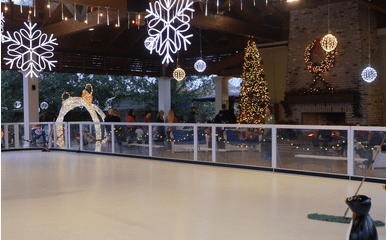Uncategorized
Snowmobile Tips for Beginners: How to Prepare for The Ride
Do you have the proper knowledge to stay safe and be prepared for snowmobiling? Find out everything with our snowmobile tips: from the basic products to carry to preparing for the worst-case scenarios.
Snowmobiles are a popular mode of transport in many of our winter vacation spots. They’re not only used often by locals to ride between neighborhoods and cross-country races during the sled season, but they’re also a fantastic way to experience the beautiful snowy surroundings.
These remarkable vehicles allow you to see some incredible views that would be difficult to access on foot. Snowmobiles are powerful vehicles that must be treated with caution, even though they are enjoyable.
Here are a few snowmobile tips for beginners that you can take note of.
Basics
One of the primary snowmobile riding tips is to take care of the necessities such as your head-gear and clothing.
- Helmet: Make sure the helmet is the correct size and in proper working condition. Ensure the jaw strap is securely fastened.
- Warm Outerwear: You’ll keep warm, and you can layer up or down depending on the weather. A windproof top layer is needed during the ride.
- Boots: Your boots should be composed of a rubber, waterproof base with a strong lug heel for traction, a nylon upper that tightens and is high enough to resist snow. It should have a stretchy lining made of acrylic, fleece, or synthetic fiber that wicks sweat away from the foot make up the perfect snowmobiling boots.
- Gloves: Gloves with a gauntlet that runs above the cuff of your jacket sleeve and over the wrist offer additional wind protection during the ride. Since you can still apply or remove the liners, fleece, or wool glove liners worn as a layer with standard gloves can help you adapt to cooler or warmer temperatures.
It’s a smart idea to have a spare dry pair on hand if you need to change.
Snowmobile Suits
Snowmobile suits are made to keep you warm and comfortable when riding. The key goal is to keep you safe from the cold, wind, and frostbite. Your clothing’s outer layer should be windproof and waterproof.
Training
Beginners must complete a training program for snowmobiling basics, snowmobile riding tips, using a compass, and reading a map accurately before venturing into distant or unknown locations. A topographic map is one kind of map that you can use. It shows the land’s contours, such as hills, valleys, lakes, rivers, and roads.
Selecting A Snowmobile
Choosing the first snowmobile can be a challenging situation for first-time users. Here are few pointers to help you through the process of purchasing a new snowmobile:
- The right tracks for snowmobile will help you have a risk-free and smoother riding experience.
- A useful tip for beginners is to figure out their budget, considering some of the extras needed. They’ll need a transceiver, shovel, probe, and bag if a mountain ride is planned.
- When buying a snowmobile, it’s critical to figure out which dealership in your region will have the best service, particularly if you’re buying a brand-new vehicle.
- Trail-specific snowmobiles are designed for riders who plan to go only groomed trail riding. They are intended solely for on-trail use and are typically much heavier than deep-powder snowmobiles.
- Deep-powder snowmobiles are engineered for deep-powder adventure and competitive speed. They are agile, lightweight, and packed with performance oomph. They’re made for riding roughly because if they’re only used on groomed trails, they’ll quickly overheat.
- Crossovers have longer tracks than trail sleds, but they’re still short enough for a quick, easy trip on groomed trails. The suspension and rider role accommodate both on-trail and off-trail uses.
Supplies to Pack
This point is more than just a snowmobiling tip. It takes more than avalanche training and having the basics to be a responsible mountain rider. Many beginners and sometimes even experienced riders have underestimated their preparedness for backcountry accidents like crashes or an extended stay.
Apart from spare clothing, be sure to pack first aid supplies, high-energy foods, cooking materials, spare lights and batteries, GPS, whistles, fluorescent materials, credit cards, cash, duct tapes, containers, bungee cords, and hunting knives.
Riding Safe
Keep the following pointers in mind to ensure a safe trip:
- A snowmobile safety course will teach you how to ride safely and properly, including the guidelines to be followed while riding a snowmobile.
- If the path is icy, the air temperature is too low, or a blizzard with whiteout conditions is predicted, you’ll want to postpone your snowmobiling trip.
- It’s critical to keep an eye out for rocks, falling trees, barbed wire fencing, ditches, open water, other snowmobiles, snowbanks, goats, hikers, and skiers in your way.
- It’s hard to tell how thin the ice is. Under your snowmobile, ice can quickly break and give way.
- Don’t go too far. Ride slowly because it allows you to respond quickly to a sudden event on your path and prevent an accident.
- Don’t stray from the route. Trails that have been marked are smoother because they have been groomed specifically for you and are less likely to contain risks. Going off the beaten path will lead to mishaps due to the unfamiliar terrain. You might even get stuck in unknown areas.
- Don’t put too much weight on your snowmobile. Exceeding these limits will increase the risk of crashes and injury due to an extra occupant or heavy equipment.
- When intoxicated, operating a snowmobile will result in delayed reactions and injuries, much like driving on the road.
- Do not tow people behind the snowmobile on something. A snowmobile is not intended to tow sleds, skiers, or saucers, and doing so is extremely dangerous.
Proper Planning and Informing Others
Prepare for the worst-case scenarios in snowmobiling because the sport’s nature demands it. Always stay alert, follow your ride guide, and pack the essentials, including materials for emergencies.
Make a rough estimate of how long you’ll be away for the ride. Share those particulars with a family member or a close friend. This way, if you’re late, people will know where to look for you.


























